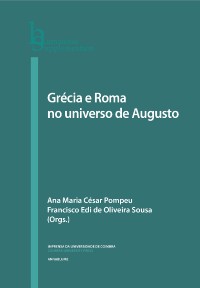Please use this identifier to cite or link to this item:
https://hdl.handle.net/10316.2/38224| DC Field | Value | Language |
|---|---|---|
| dc.contributor.author | Oliveira, Roberto Arruda de | |
| dc.date.accessioned | 2015-12-14T12:14:16Z | |
| dc.date.accessioned | 2020-09-10T16:23:40Z | - |
| dc.date.available | 2015-12-14T12:14:16Z | |
| dc.date.available | 2020-09-10T16:23:40Z | - |
| dc.date.issued | 2015 | - |
| dc.identifier.isbn | 978-989-26-1052-8 | |
| dc.identifier.isbn | 978-989-26-1053-5 (PDF) | |
| dc.identifier.uri | https://hdl.handle.net/10316.2/38224 | - |
| dc.description.abstract | The belief in the myth of the Eternal Return, the cyclical “birth” and “death” of the world, shared by several ancient societies, seems to have its origin in the harvest: even the Etruscans referred to it. As time passed, however, it has been reinterpreted in different ways, and assimilated by the Stoics and the Neopythagoreans, arriving in Rome by the first century B.C. The Golden Age, foreshadowed by the Fourth Eclogue, presented itself as an attempt to re‑establish humans’ “lost paradise”: that was the time required for a new beginning as the Great Year reached its end. The poet, inspired by the Ages described by Hesiod, prophesies, through the voice of the Sibyl of Cumae, the end of the last age, the worst of all times, the Iron Age, and the new birth of the first and paradisiacal Golden Age. The political conflicts favored this belief: the Civil War, the assassination of Caesar, the dispute between Mark Antony and Octavian. This moment of crisis inspired in Virgil “the belief ” that he was in the Iron Age and soon the consul Pollio, his protector, would bring the peace or the mythical Golden Age back, reconciling Mark Antony and Octavian (the Treaty of Brundisium). | eng |
| dc.description.abstract | A crença no mito do Eterno Retorno, “nascimento” e “morte” cíclica do mundo, compartilhado entre diversas sociedades antigas, parece ter tido início quando dos tempos da colheita: até os etruscos dela falaram. Ao longo do tempo, contudo, foi reinterpretada de formas diversas, e, tendo sido absorvida pelos estoicos e neopitagóricos, termina chegando pelo séc. I a.C. em Roma. A Idade de Ouro, prenunciada na Quarta Bucólica, apresentava‑se como uma tentativa de restabelecimento do “paraíso perdido” da humanidade: o período de tempo necessário ao recomeço, o Grande Ano estava terminando. O poeta, inspirando‑se nas Idades descritas por Hesíodo, profetiza pela boca da Sibila de Cumas o fim da última idade, a pior delas, a de Ferro, e o novo nascimento da primeira, a paradisíaca, a de Ouro. O momento político propiciava essa crença: a Guerra Civil, o assassinato de César, a disputa pelo poder entre Marco Antônio e Otávio. Esse momento de crise inspirou em Virgílio a “certeza” de que ele estaria na Idade de Ferro e que, em breve, o cônsul Polião, seu protetor, traria de volta, reconciliando Marco Antônio e Otávio (Tratado de Brindes), a paz ou a mítica Idade de Ouro. | por |
| dc.language.iso | por | - |
| dc.publisher | Imprensa da Universidade de Coimbra | por |
| dc.relation.ispartof | http://hdl.handle.net/10316.2/38208 | por |
| dc.rights | open access | - |
| dc.subject | Virgil | eng |
| dc.subject | Eclogues | eng |
| dc.subject | aetas aurea | eng |
| dc.subject | Augustus | eng |
| dc.subject | Virgílio | por |
| dc.subject | Bucólicas | por |
| dc.subject | aetas aurea | por |
| dc.subject | Augusto | por |
| dc.title | Virgílio e a Aetas Aurea Augustana | por |
| dc.type | bookPart | por |
| uc.publication.firstPage | 87 | - |
| uc.publication.lastPage | 97 | - |
| uc.publication.location | Coimbra | por |
| dc.identifier.doi | 10.14195/978-989-26-1053-5_5 | - |
| uc.publication.digCollection | PB | por |
| uc.publication.orderno | 5 | - |
| uc.publication.area | Artes e Humanidades | por |
| uc.publication.bookTitle | Grécia e Roma no universo de Augusto | - |
| uc.publication.manifest | https://dl.uc.pt/json/iiif/10316.2/38224/213068/manifest?manifest=/json/iiif/10316.2/38224/213068/manifest | - |
| uc.publication.thumbnail | https://dl.uc.pt/retrieve/11198593 | - |
| uc.publication.parentItemId | 54540 | - |
| uc.itemId | 70653 | - |
| item.grantfulltext | open | - |
| item.fulltext | With Fulltext | - |
| Appears in Collections: | Grécia e Roma no universo de Augusto | |
Files in This Item:
| File | Description | Size | Format | |
|---|---|---|---|---|
| virgilio_e_a_aetas_aurea_augustana.pdf | 435.9 kB | Adobe PDF |  |
Items in DSpace are protected by copyright, with all rights reserved, unless otherwise indicated.
